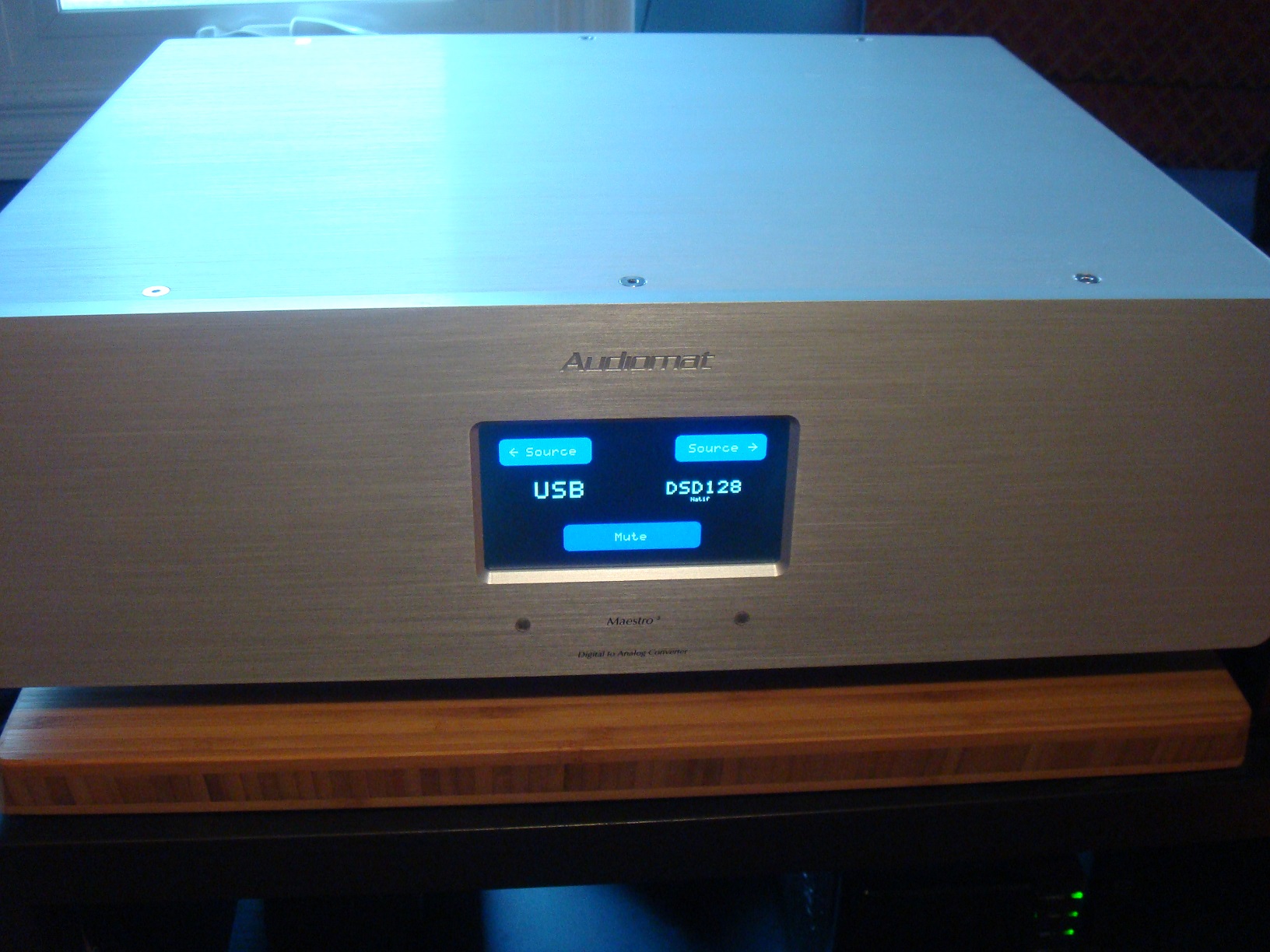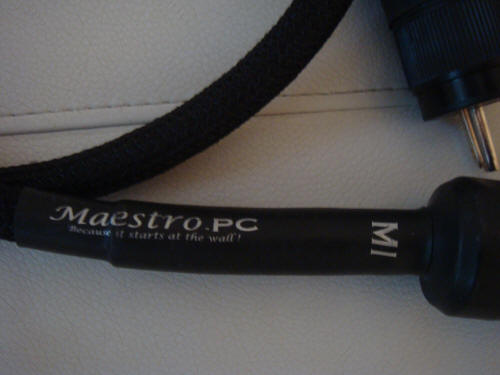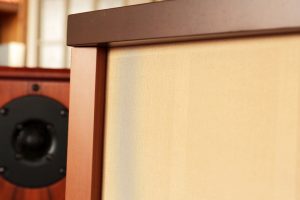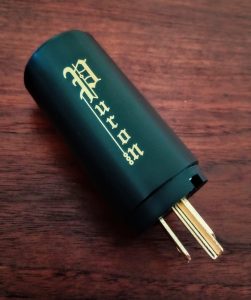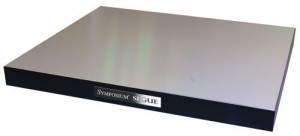
My first experience with an audiophile rack was Grand Prix Audio's Monaco which blew my mind both in price and performance. Up until that point I knew that the material a component sat upon tended to alter its sonic signature to some degree and not always in a favorable manner. To my way of thinking footers and racks were mere accessories that one would play with after assembling a system and that expensive racks were nothing more than ego Hi-Fi. What possible improvement could they offer that would justify such outlandish prices? My experience with the Monaco changed that. The Monaco offered an improvement in overall focus, resolution and transparency far beyond what my various footers and cones were capable of providing. While I'm not suggesting that you need to spend several thousand on a rack to enjoy music I believe some thought should be given to what components are seated upon to maximize the musicality of a system. There are plenty of effective stands and racks available at many price points. Some audiophiles say acrylic, glass and steel are no good for audio racks and that hardwood, plywood, aluminum and brass are superior. I've heard good and bad from all sorts of varying materials and designs. There are as many approaches to dealing with resonance and vibration control for audio equipment as there are religions which is my way of waffling on declaring superiority of any one design over another.


Charisma Audio, a Toronto based distributor/retailer I visit regularly started importing racks from South Korea. After seeing the racks in person and being impressed with their obvious quality and wife friendly appearance I agreed to a review.
Codia Acoustic Design is a high-end audio furniture company based in South Korea which designs and manufactures premium grade audio racks and accessories. Their top-of-the-line Stage 3000 rack system is a wooden rack designed to reduce resonance/vibration via a number of design features. The shelves use Baltic multi-layer plywood with different densities that supposedly absorb and release vibration at various frequencies. They also feature CNC precision cut slots in differing lengths to address vibrations at different frequencies similar to how acoustic diffusers work. Codia also claims these slots reduce reflective resonant behaviours between shelf and component. Additionally the slots offer superior ventilation for hot running equipment such as tube amps. The posts are solid aluminum instead of the more common hollow posts and should assist in eliminating ringing. Each shelf is decoupled via carbon washers and adjustable threaded metal spikes are provided to couple the rack directly to special floor protectors that also help to dissipate vibrational energy in 360 degrees. Codia Stage 3000 racks are available in a number of configurations however special custom versions are available upon request. For this review I was initially provided with several variants but focused on a two-shelf double-width Stage 3000 Duo with bubinga outer trim which gave a nice two-tone appearance.

The specification of the Duo rack is as follows:
-
Shelf panel thickness: 30 mm
-
Shelf panel size (double width): 1125 x 535 mm (width x depth)
-
Overall width: 1240 mm
-
Column diameter: 30 mm
-
Column lengths: 150, 180, 240, or 300 mm
-
Up to 4 shelves
-
Loading capacity per shelf: 70 kg
-
Shelf panel material: Inner panel: Baltic Birch Plywood, Frame: Available in Hard Maple, Bubinga or Rosewood
While a manual was not provided, set-up was a breeze and fairly intuitive. However, there is video instruction available on Charisma's website. Overall I was impressed with the fit and finish of the rack as was my wife. All the fittings were of impeccable precision quality.
As my Audiomat gear features sharp cones, I placed either a cutting board or piece of plywood between component and shelf to prevent damaging my loaner rack.
After removing my system from an inexpensive IKEA shelf and placing it on the 3000 I punched up some tunes via my Google Nexus 7 tablet and was pretty much rewarded with exactly what I've come to expect from a decent aftermarket purpose built audio stand; improved focus and transparency, a quieter background and a wider dynamic range.
It was easier to hear the lines in large scale orchestral works as well as the various instrumental sections especially woodwinds which tend to get obscured with equipment placed on ordinary chipboard or MDF furniture.

Music leapt free and came to life with great energy and scale. The soundstage moved away from the speakers giving a more realistic sense of space. Instruments and voices were more expressive and texturally natural and better separated yet also the musical lines and nuances tied into a more coherent whole. More importantly the sense of timing and flow took a significant step forward. It was damn near impossible to sit still while playing the 24/96 version of Daft Punk's Random Access Memories. The rhythms and driving beat and momentum of this album was far better realized on the Stage 3000 than on ordinary furniture. Additionally the delicate shadings, ambient space and touch of well performed and recorded classical music such as The Spirit of Gambo's wonderfully nuanced performance of various Dutch viola da gamba pieces on The Galaxy Recordings (Stockfish Records) were far more realized than what was possible with my system sitting on an Ikea shelving unit. The tone and texture of each instrument was on another level with the Stage 3000.
As good as the Stage 3000 was, it did not draw me into my recordings to the same degree as the GPA Monaco. No doubt due to its near fanatical attention to broadband vibration and resonance control, the Monaco offers greater low-level detail, greater transparency and a more heterogeneous presentation which all combine to deliver a more beguiling and compelling vibe that is impossible to ignore.

I think both racks will appeal in different ways. Music flowed in an energetic exciting yet focused way with the Stage 3000. The Monaco indeed offers greater subtlety, insight and refinement into the quietest and most delicate passages but is also ruthlessly revealing—you will hear it all, be it good, bad and the fugly. Yet for all that detail and transparency I felt the Stage 3000 offered a bit more excitement and dynamic freedom.
By the end of my time with the Stage 3000, I was impressed not only on its positive effect on music playback but also its appearance which I think is almost as important as sonic concerns. If I'm going to be staring at a rack for hours, I'd rather see an attractive heirloom quality piece of furniture than something resembling construction scaffolding. To me, and more importantly the missus, nicely finished wood is generally more appealing to the eye than metal and acrylics and can be to the ear as well.
Compared to ordinary mass market furniture the difference with the Codia was all for the better. Recordings were more focused, interesting, informative and compelling. Its impact on my system was to help free music from the electronics and bring it more alive, more vivid, more focused and more dramatic.
Once you've sorted out your system the Codia Stage 3000 would be a nice upgrade, visually and aurally over ordinary non-audiophile shelving. I'm not sure I'd call the Codia Stage 3000 a bargain but considering what many of its competing products retail for, it ain't exactly outrageously priced either, especially if you consider it fine quality furniture and not just an audio stand. Definitely worth checking out. Paul Candy
Codia Acoustic Design Stage 3000 Duo Audio Rack
Retail: starting at $1400
North American exclusive dealer: www.charismaaudio.com
Online store www.charismaaudio.myshopify.com







